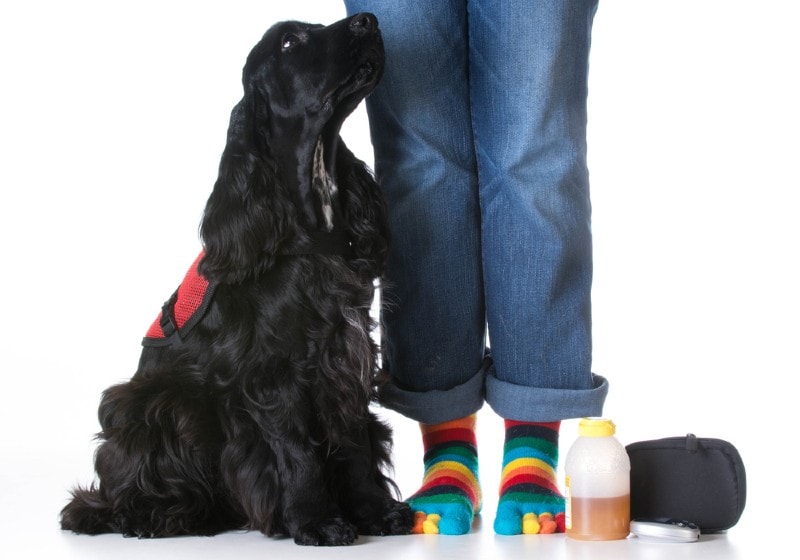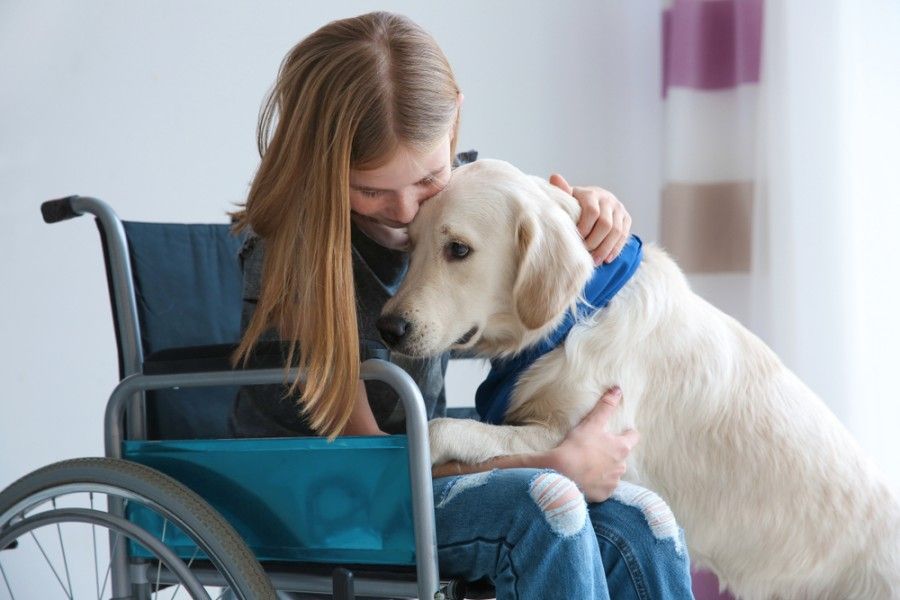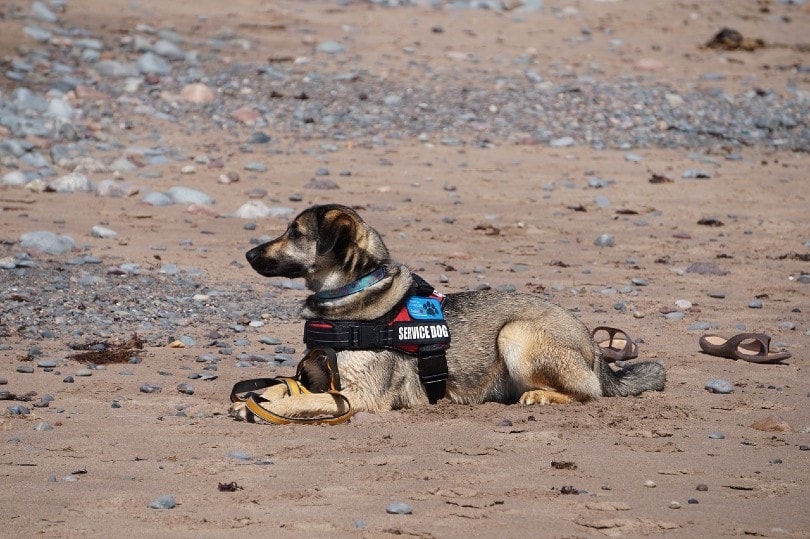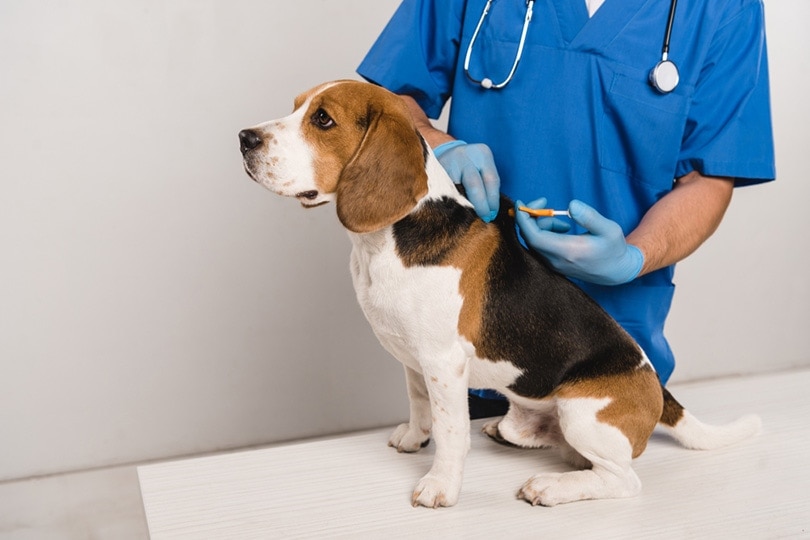Diabetic Detection Dogs: Training & Effectiveness (Vet Reviewed)

Updated on

Dogs have a naturally heightened sense of smell, which makes them fantastic hunters. It also means professionals have been able to harness these skills by training certain dogs to recognize and react to scents.
While a diabetic detection dog isn’t a replacement for checking your blood sugar levels, it is a safeguard for people who experience high or low blood sugar. This might be the first time you’ve heard of a diabetic detection dog, or maybe you want to learn more about them!
Who Trains Diabetic Detection Dogs?
There are service dog training programs available across the country, like Diabetic Alert Dog University and the National Institute of Canine Service and Training. These organizations train their dogs to recognize different scents, which include the smell released when a person’s blood sugar is low or high.
There are two levels of service dogs. The first is a medical response dog for diabetes. Once a person has become symptomatic, the dog will respond to signs that their owner is experiencing low blood sugar. On the other hand, a diabetic alert dog that is trained to recognize changes in blood chemistry. This means a person has a 15- to 30-minute window to take action before symptoms occur.
Generally, the breeds used to perform diabetic dog duties are:

How Does It Work?
Scientists believe that dogs can smell chemical changes in your saliva, breath, and sweat when your blood sugar levels shift. Dogs are trained by using sweat samples (when the person has low blood sugar and when they have normal blood sugar) from their potential owners. Dogs are then rewarded when they detect the low blood sugar sample.
Dogs are trained to react in different ways to get their owner’s attention if they have a high or low blood sugar episode.
For example, a dog might:
- Hold a particular toy in their mouth
- Jump on the owner
- Sit and stare at the owner
- Touch the owner with their nose
Dogs might also perform activities in addition to getting their owner’s attention.
These might be:
- Alert other family members that their owner needs assistance.
- Bring objects, like medication.
- Retrieve a cell phone for the owner.
- They might even dial 911 using a special device if needed.
How Do You Get a Service Dog?
There are various ways you can look into getting a dog of your own. You can contact organizations like Assistance Dogs International to get more information about local programs that train diabetes service dogs. You could also contact organizations that train dogs directly. Many have online applications, and they tend to ask for the following:
- Application form with your information (address, age, etc.)
- Your medical history
- Letter(s) of reference (personal or professional)
This is, unfortunately, not a fast process and can be quite extensive. It will often require a potential owner to meet a dog several times before being trained to recognize the owner’s specific scent. So, the quicker you enquire about this if you are interested, the better.

Advantages of Diabetic Detection Dogs
A diabetic detection dog doesn’t replace the individual management of the condition. Owners still monitor and treat their blood sugar regularly, but having a detection dog can give an owner a feeling of reassurance.
- Ability to take part in more physical activities
- Fewer events where 911 has to be called
- Fewer episodes of passing out from low blood sugar
- Greater independence
- Improved blood sugar control
- Improved quality of life/less time spent worrying
Disadvantages of Diabetic Detection Dogs
A significant disadvantage is the cost. A diabetic detection dog typically costs between $8,000 and $20,000 initially. Some organizations offer free service dogs if you pay for training, so it’s worth researching beforehand.
Of course, with all animals, there is also the expense of keeping them. You have to take into consideration the veterinary bills and food. The service dogs sometimes need regular testing to ensure they are continuing to reliably detect changes in your blood sugar levels, which could lead to your dog requiring further training.
An owner needs to consider that a service dog will take care of them, but they also require care just like any other dog. They need to be bathed, exercised, fed, and also loved. A loving bond between dog and owner is vital.
Another problem is that diabetic detection dogs are still supposed to alert their owners when they are asleep, but dogs need to sleep too. Unfortunately, their accuracy is not as high during the night.
Frequently Asked Questions (FAQ)
Why Can’t All Breeds Be Used as Diabetic Detection Dogs?
Many breeds are intelligent, so you might wonder why not every intelligent species can be considered a potentially good detection dog. A German Shepherd, for example, is eager to learn and smart. However, they are prone to guarding, and a diabetic detection dog should never be overly protective or growl at strangers.
The Australian Shepherd is another intelligent breed that isn’t known for being aggressive. However, they are known to be sensitive to situations or sounds. They also have a very high working drive, which wouldn’t be suitable, as service work requires many hours of downtime.
What Should You Consider Before Getting a Service Dog?
Just because you have diabetes, it doesn’t mean you’ll benefit from having a service dog. If you have reasonable control of your blood sugar level with oral medication and don’t suffer from frequent episodes of hypoglycemia, you might find you don’t need the added expense of a service dog.
People who might benefit from a diabetes service dog are people who:
- Suffer from hypoglycemia unawareness
- Control their blood sugar with injections or an insulin pump
- Frequently experience low blood sugar levels
- Are living away from support (like students)
Conclusion
While a diabetic detection dog isn’t for everyone, and they aren’t going to have flawless detection, they do increase an owner’s quality of life. Not only are they a safeguard, but they also provide companionship for what can be an isolating and frightening illness. Taking on a dog, however, means also being able to provide for them in every way. They require love, exercise, and a healthy diet.
- You might also like: Pet Diabetes Month: When Is It and How Is It Celebrated?
Featured Image Credit: WilleeCole Photography, Shutterstock













